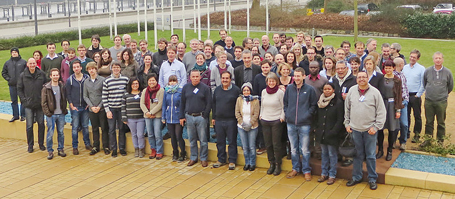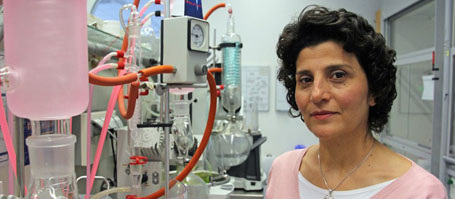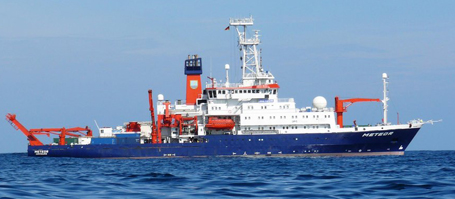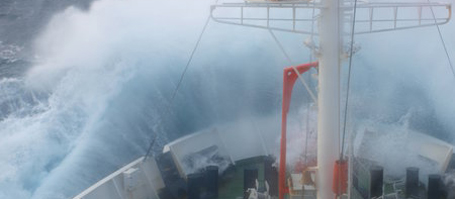Today the German research community announced that they will fund a third and conclusive project phase at Kiel University and GEOMAR Helmholtz Centre for Ocean Research Kiel with 12 million Euros for four further years.
Shoals of colorful fish in front of even more colorful corals – tropical seas are said to be oases of life. However this image is only partly true. A precise look at the breadth and especially the depths of the tropical oceans reveals immense zones in which oxygen is scarce. The oxygen minimum zones (OMZ) exist because of natural processes at the eastern margins of the Pacific, the Atlantic and in the Arabian Sea. Not only do they influence the biology by enclosing the habitats of fish, they also play an important role for global material cycles, e.g. for the important nutrient nitrogen and for carbon as CO2. Measurements show that they have expanded in the last decades.
Since 2008, the Collaborative Research Centre 754 “Climate-Biogeochemistry Interactions in the Tropical Ocean”, located at Kiel University and GEOMAR Helmholtz Centre for Ocean Research Kiel, have been studying if and how these OMZ are changing as a consequence of climate change. Today the German Research Foundation announced that they will fund a four-year phase of the SFB 754 with more than 12 million Euros. “This is fantastic news. After the positive evaluation by an international top-class jury of experts, we can continue our pioneering work and develop a better understanding of the dynamics of oxygen minimum zones and their role in the earth system during the next four years”, emphasizes Prof. Dr. Andreas Oschlies from GEOMAR, spokesperson of the SFB 754 since 2011.
CAU president Lutz Kipp emphasizes: “The fact that the SFB funding will continue underlines the excellent cooperation of university and non-university research. I congratulate everybody who is involved in this success! Now we want to take the next steps in the excellence initiative together.” GEOMAR Executive Director Professor Peter Herzig equally congratulated the scientists of the SFB: “For eight years, Kiel’s Collaborative Research Centre 754 has worked on answering urgent questions concerning the future of the ocean and the climate. As a consequence of its high standard of research, it has earned national and international recognition. The approval of a third phase by the DFG is both a confirmation of past performance as well as a motivation for further innovative studies.”
In total six expeditions in the eastern Pacific and two scientific excursions into the tropical Atlantic are planned for the third phase between 2016 and 2019. Another highlight is a ten-week experiment with Kiel’s offshore mesocosms (KOSMOS) in the OMZ off Peru. The world-wide unique mobile and seaworthy test containers have been used primarily to analyze the impact of ocean acidification on ecosystems in the upper water levels of the seas. “Numerous further biological, physical and geochemical experiments using the mesocosms are being conducted off Peru, in order to identify the mechanisms which were and will be responsible for the expansion and reduction of the worldwide largest OMZ in the tropical ocean. Therefore, climate and ocean models are being used in Kiel which have been refined for this purpose and are oriented towards biochemical processes”, explains Professor Oschlies. Moreover, the SFB 754 works closely with the Instituto del Mar del Peru (IMARPE) and the Instituto Geofisico del Peru (IGP). For tests in the Atlantic there is a strong cooperation with the Instituto Nacional de Desenvolvimento das Pescas (INDP) in Mindelo on the Cape Verde Islands.
In order to better understand how and why oxygen-rich water reaches particular areas of the Oxygen Minimum Zones and others do not, the expansion of trace substances emitted in the OMZ of the Atlantic and the Pacific in the past years are being studied. Additionally, sediment samples which provide information about past oxygen concentrations in the ocean are being analyzed. According to Prof. Dr. Ralph Schneider from Kiel University und vice-spokesperson of the SFB 754: “From the changes in the past we can learn which processes will presumably also be relevant for the future and how we have to consider them in our climate models“.
The Collaborative Research Centre is unique in the world and comprises around 100 scientists from the areas of oceanography, physics, biology, chemistry, biogeochemistry, paleontology, geology, meteorology and climate modeling. “The system of the ocean is quite complex. In order to understand the interplay of the different factors, we here in Kiel work closely together over subject boundaries. This will be particularly important in the upcoming synthesis phase of the SFB 754 in order to gain a comprehensive perspective of the development of the oxygen minimum zones and their influence on the sea habitat,” emphasizes SFB 754 speaker Professor Oschlies.
Links:
www.uni-kiel.de Kiel University
www.sfb754.de Collaborative Research Centre 754 "Climate-Biogeochemistry Interactions in the Tropical Ocean"
Contact:
Jan Steffen (GEOMAR, Communication & Media), Phone: +49 431 600-2811
presse@geomar.de
…



